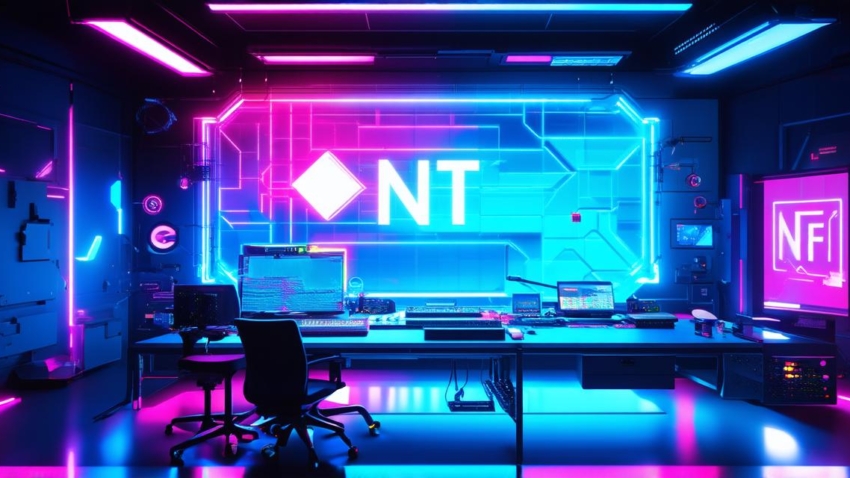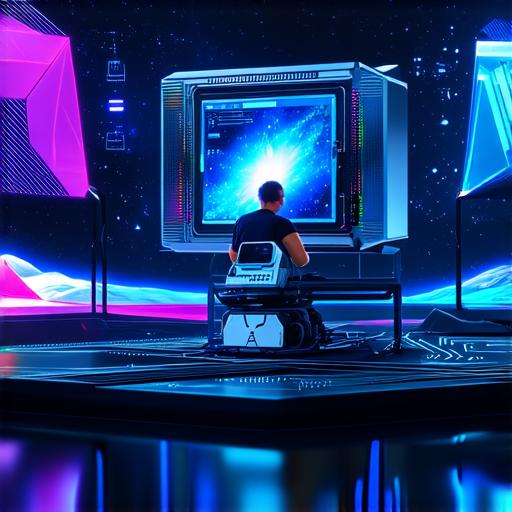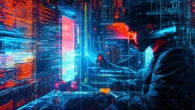
Is there a future for NFTs
The concept of non-fungible tokens (NFTs) has been around for a while now, but it wasn’t until 2021 that this technology gained significant traction. The buzz around NFTs has continued to grow ever since, with many investors and collectors showing interest in the unique digital assets they represent.
But what exactly are NFTs? In simple terms, NFTs are one-of-a-kind digital tokens that represent ownership of a particular asset. These assets could be anything from art and music to real estate and collectibles. The key characteristic of an NFT is that it cannot be replaced or exchanged for another identical token.
One of the most significant benefits of NFTs is that they provide a secure and transparent way to verify ownership of digital assets. This is particularly important in the art world, where NFTs have been used to sell unique pieces of digital art and even entire collections. The use of NFTs has also made it possible for artists to monetize their work directly with fans and collectors.
In addition to the art world, NFTs are being explored in other industries, such as gaming and real estate. For example, some games have started using NFTs to represent in-game items that can be bought and sold on marketplaces. Similarly, real estate companies are using NFTs to represent unique properties or even entire neighborhoods.
However, despite the potential benefits of NFTs, there is still a lot of uncertainty about their future. Some experts predict that NFTs will become an integral part of the digital economy, while others believe that they are just a passing fad. So, is there really a future for NFTs?
Let’s explore some case studies to better understand the potential of NFTs.
Art and Collectibles
As mentioned earlier, NFTs have already found success in the art world. In fact, one of the most famous NFT sales to date was the sale of a unique piece of digital art called “Everydays: The First 50 Days” by Beeple for $69 million.
Another successful example is the sale of the first-ever tweet by Jack Dorsey, the co-founder of Twitter, as an NFT for over $480,000. These sales highlight the potential for NFTs to revolutionize the way we buy and sell digital assets in the art world.
But what about other collectibles? The same principles that make NFTs useful for art can also be applied to other types of collectibles, such as sports cards or comic books. By using NFTs, it becomes possible to verify ownership of unique items in a secure and transparent way, which could lead to increased value and liquidity in these markets.
Gaming
The gaming industry is another area where NFTs have the potential to make a significant impact. In-game items, such as weapons or characters, can be represented using NFTs, making it easier for players to buy, sell, and trade them on marketplaces. This has already been seen in games like “Cryptokitties” and “Rare Bears,” which use NFTs to represent unique digital pets that can be bought and sold on marketplaces.
Real Estate
Finally, the real estate industry is also exploring the potential of NFTs. By using NFTs to represent properties or even entire neighborhoods, it becomes possible to create a digital marketplace for real estate assets. This could make it easier for buyers and sellers to transact directly without the need for intermediaries, which could lead to increased efficiency and reduced costs.
FAQs
What are NFTs?
NFTs are one-of-a-kind digital tokens that represent ownership of a particular asset. These assets could be anything from art and music to real estate and collectibles. The key characteristic of an NFT is that it cannot be replaced or exchanged for another identical token.
How do NFTs work?
NFTs are created using blockchain technology, which provides a secure and transparent way to verify ownership of digital assets. When an NFT is created, it is assigned a unique identifier that cannot be duplicated. This identifier is stored on the blockchain, along with other information about the asset, such as its provenance and ownership history.
What are some examples of NFTs?
Some examples of NFTs include digital art, music, real estate, and collectibles. In fact, many artists have already started using NFTs to sell unique pieces of digital art and even entire collections.
What is the future of NFTs?
It is difficult to predict the exact future of NFTs, but they do have significant potential in a variety of industries. From art and collectibles to gaming and real estate, NFTs could revolutionize the way we buy and sell digital assets in the years to come. However, there is still a lot of uncertainty about their long-term viability, and it remains to be seen how they will evolve over time.
How do I buy an NFT?

There are several ways to buy an NFT, depending on where the asset is being sold. Some common platforms for buying and selling NFTs include OpenSea, Rarible, and SuperRare. These platforms typically require users to create an account and link their digital wallet, such as MetaMask or MyEtherWallet, in order to buy and sell NFTs.
What are some risks associated with buying NFTs?
There are several risks associated with buying NFTs, including the possibility of fraud, market volatility, and the lack of regulatory oversight. It is important for buyers to do their research before investing in NFTs and to only buy from reputable sources. Additionally, it is always a good idea to store your NFTs securely in a digital wallet, rather than on an exchange or other third-party platform.
What are some common uses for NFTs?
Some common uses for NFTs include art and collectibles, gaming, real estate, and even sports memorabilia. In fact, NFTs have already found success in a variety of industries, and their potential continues to grow as the technology evolves.
Summary
The future of NFTs is still uncertain, but there are many compelling reasons to believe that they will continue to play an important role in the digital economy. From art and collectibles to gaming and real estate, NFTs have the potential to revolutionize the way we buy and sell digital assets in the years to come. As with any new technology, it is important for us to stay informed about the latest developments and to carefully consider the risks and benefits before investing. With the right approach, NFTs could be a powerful tool for creators, collectors, and investors alike.







